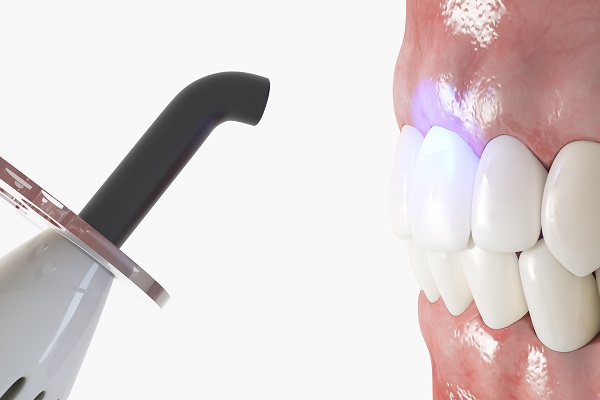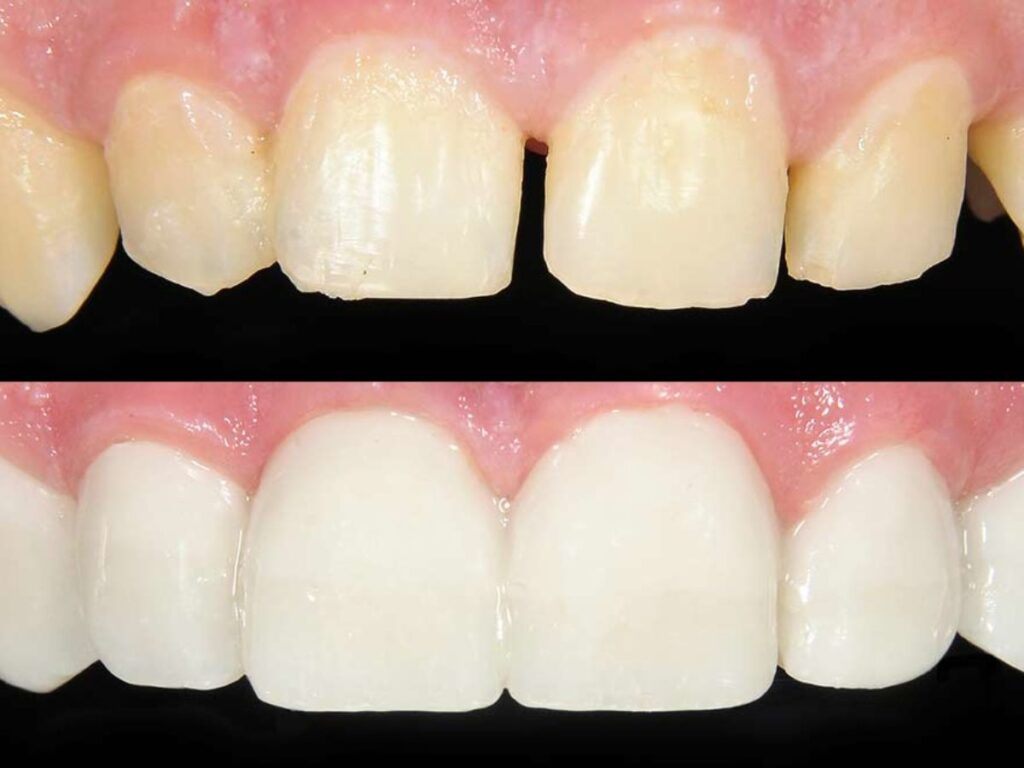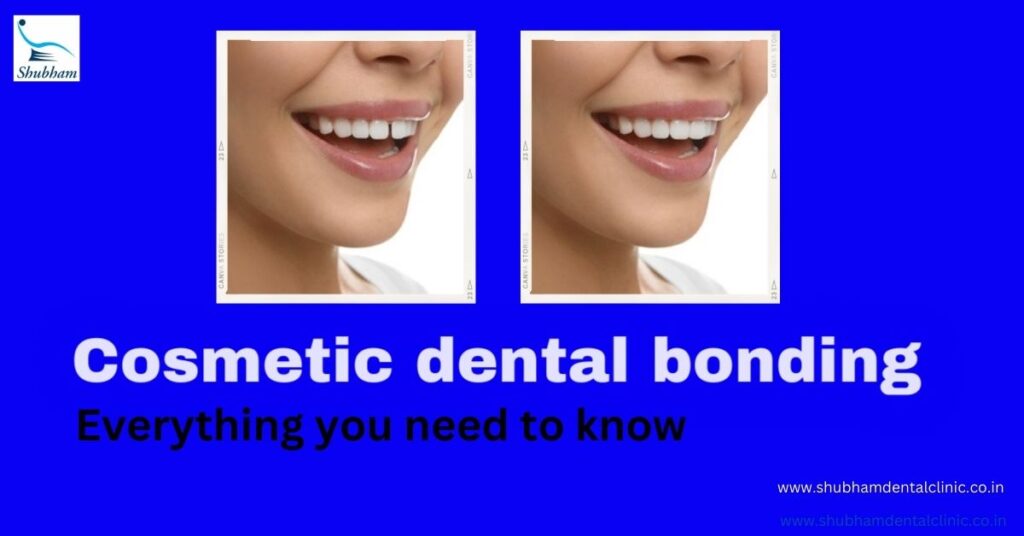Do you feel underconfident because of your stained or crooked teeth? Do you want to get your teeth fixed to get a beautiful and confident smile? If your answer to these questions is yes, then cosmetic dental bonding is the best treatment option for you.
If you have any queries regarding cosmetic bonding, there is no need to worry. In this blog, we will discuss everything you need to know about dental bonding and how to get an attractive smile with dental bonding treatment. So, keep on reading!
What is cosmetic dental bonding?

Cosmetic bonding, also known as dental bonding, is a dental procedure in which a tooth-colored resin material is applied and hardened with a special light, bonding it to the natural tooth. It’s a versatile and cost-effective solution for various dental issues.
How long will front teeth bonding last?
The filling materials used these days have excellent strength and durability. It is not as durable as compared to ceramic veneers, but studies say it can last for over 3-4 years before its replacement or repair should be considered.
Is dental bonding safe and permanent?
Dental bonding is generally considered safe when performed by a qualified and experienced dentist. The materials used in bonding, typically a composite resin, are safe and well tolerated for oral use. Research shows that composites do not contain any such material that causes allergic reactions. So you don’t have to worry about any adverse effects.
Dental bonding is not considered a permanent solution. It may need to be replaced or touched up over time, depending on factors such as wear and tear, changes in oral health, or aesthetic preferences.
It’s important to have realistic expectations and to understand that they have a limited lifetime, just like other cosmetic dental treatments. You can expect your dental filling to last between 3 to 5 years if good care is taken by you.
Are veneers better than dental bonding?

Both veneers and tooth bonding are cosmetic dental procedures and they perform the same function of restoring the damaged teeth but they are made differently.
Veneers are thin shells typically made of porcelain or composite resin. Veneers offer highly aesthetic results and durability as compared to composite restorations. Their translucency resembles nearly natural teeth.
In summary, both veneers and tooth bonding have their advantages and considerations. Veneers are often preferred for their durability and aesthetic qualities, while bonding may be a more suitable option for minor cosmetic improvements. Bonding is more cost effective than veneers making it a more budget-friendly option. Consulting with your dentist will help determine the best approach based on your individual circumstances and goals. To know more about veneers, read more
Can dental bonding be done at the back of the front teeth?
If the back of your front tooth is carious, then yes your dentist will remove the damaged tooth structure and composite filling will be done to restore the missing tooth structure. Dental bonding is a restorative procedure and can be done on any surface, back or front.
Composite bonding is effective in improving the appearance of teeth. It can be used to repair chipped or cracked teeth, close gaps, reshape teeth and address discoloration of any tooth surface.
Is composite bonding a good option for my teeth?
Composite bonding can be a good option for certain dental concerns like chipped or discolored teeth. Composite resin can be customized to match the natural color of your teeth, providing a seamless and natural-looking result. Bonding is a relatively conservative dental treatment compared to some other options. It often requires minimal removal of tooth enamel, making it less invasive. It is a budget-friendly option and is completed in one sitting. So, yes, dental bonding is a good option for your teeth.
How to maintain dental bonding?
Maintaining dental bonding is important to ensure its longevity and appearance. Here are some tips to help you care for your bonded teeth:
Practice Good Oral Hygiene:
- Brush your teeth at least twice a day.
- Floss daily to remove plaque and debris from between your teeth.
- Use an antiseptic mouthwash for rinses.
Avoid staining agents
Minimize the consumption of staining substances like coffee, tea, red wine, and tobacco. These can potentially discolor the bonding material over time.
- Be Mindful of Your Diet:
Limit the intake of sugary and acidic foods and beverages to reduce the risk of decay and erosion, which can affect bonding.
- Avoid Biting on Hard Objects:
Refrain from biting on hard objects like ice, pens, or hard candies, as this can chip or damage the bonding material.
- Wear a Mouthguard:
If you grind your teeth at night or participate in contact sports, wearing a mouthguard can help protect your bonded teeth from damage.
- Regular Dental Check-ups:
Schedule regular dental check-ups and cleanings to monitor the condition of your bonded teeth and address any issues promptly.
- Address Concerns Promptly:
If you notice any changes in the appearance or feel of your bonded teeth, such as chipping or rough edges, consult your dentist promptly for assessment and potential repairs.
- Avoid Using Your Teeth as Tools:
Refrain from using your bonded teeth as tools to open packages or bite on hard objects, as this can lead to damage.
- Maintain a Balanced Diet:
Eating a balanced diet that includes a variety of nutrients can contribute to overall oral health and the longevity of dental bonding.
Quit Smoking:
If you smoke, consider quitting. Smoking not only stains teeth but can also impact the overall health of your oral tissues.
Remember that while dental bonding is durable, it may need maintenance over time. Regular communication with your dentist is key to ensuring that your bonded teeth remain in good condition, and they can provide guidance on proper care based on your specific situation.
What are the pros and cons of dental bonding?
Some pros of dental bonding are-
Safe
Aesthetically pleasing
Less time consuming
On the other hand, there are some drawbacks of composite restorations-
Less durable as compared to silver fillings
High cost
Get stained with time if oral hygiene is not maintained properly
Bleaching is not possible in bonded restorations
Can I get dental bonding in place of braces?

In a few cases, dental bonding can be used to cover gaps between adjacent teeth. It will give good aesthetic results, especially in minor defects, but the underlying problem will not be addressed. Ideally, teeth gaps should be eliminated with orthodontic treatment. However if one has a shortage of time and orthodontic treatment is not possible in a short span then one can get minor gaps fixed cosmetically with dental bonding.
After how much time I can eat after tooth bonding?
Dental bonding or composite fillings are chemically hardened when exposed to an appropriate light source. So you can start eating normally as soon as you get your composite fillings done. However, you should always take care to avoid hard foods as they may fracture the filling.
How do you get stains removed from bonded restorations?
Unfortunately, composite restorations get stained with time and these stains cannot be removed through professional teeth whitening. So the only option to remove stains is to replace or repair the existing restorations.
Do you have fractured or crooked teeth that need restoration? If you are looking for the best dentist in Hisar, your best option is to visit Shubham Dental Clinic. Why? We have the most experienced dental team in town and the latest equipment. Moreover, we offer the best dental services at affordable prices. So what are you waiting for? Book an appointment with us today and start your journey towards a healthy and long-lasting smile.

Good article who are facing crack/damage teeth in front . It’s effect not only smile also self confidence.
You have not only clearly also effectively describe in this article about bonding technique. Nicely written well describe
Thanks Dr.
Thanks sir.